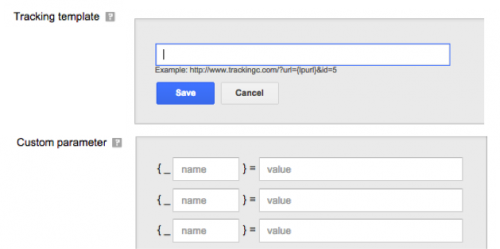Today Google formally announced the launch of their long anticipated upgraded URLs. We understand that many Google advertisers out there are wondering what this change means to them and how they will be impacted. In this post, we hope to provide answers to the main questions out there regarding this mandatory change and hopefully help put you at ease.
For starters, what are upgraded URLs?
Google is introducing upgraded URLs to help advertisers track ads and execute changes more efficiently. You can now specify separately two pieces of information for your URL: 1) The landing page URL – the landing page were the user will go when they click on the ad, and 2) Your tracking information – the values you’d like to track about your ad performance which can be at the account level. As a result, you will no longer need to update ads, keywords, or site links every time you need to add a tracking parameter to your URLs.

What do I need to do?
Google is requiring all advertisers to change the structure of their URLs to the new upgraded format by mid 2015. While Google will automatically do the most basic migration of all non-redirect URLs to the new format on the deadline, it is recommended that advertisers proactively take charge of updating their URLs ahead of time in an effort to conform to Google’s “best practices” structure.
Wait, I need to individually update each of my URLs? That’s a lot!
Yes, Google does require advertisers to update all of their URLs, which is a daunting task considering the volume of URLs the average advertiser has to deal with. To help mitigate the chance of errors and any potential negative impact on campaigns, there are tools out there that will assist you with making this update easy and painless. There are platforms that not only offer a migration tool to easily upgrade all your URLs according to best practices prior to the deadline, but also offer resources to help answer any questions or solve issues you may have along the way – helping to eliminate any disruption to your campaigns.
Got it, so what should I do now?
Take the time to figure out the right strategy for upgrading your Google URLs. This will help you experience a smoother transition and allow you to focus solely on the benefits that new upgraded URLs have to offer.
Happy Upgrading!
This article was syndicated from Business 2 Community: A Brief Guide to Understanding Google’s Upgraded URLs
More Digital & Social articles from Business 2 Community:




